Parvo is a very serious disease in dogs, which kills approximately 89% of those who don’t receive prompt treatment. Canines who receive veterinary care after becoming symptomatic often recover, but up to 36% of these may still die.
Fortunately, there is a vaccine available which will protect most dogs from the disease. It also means that parvo is not as common as it was only a few decades ago.
Nevertheless, parvo is one of the most dangerous diseases that affects dogs, and owners often have a number of questions about it. We’ll try to shed light on the disease, the symptoms it causes, and the way it is spread from one animal to another below.
If you are in a hurry, just check out our key takeaways or jump down to our FAQ section at the bottom of the article to find the answers to some common questions.
Parvo in Dogs: Key Takeaways
- Parvo is a very serious — often fatal — disease that can afflict dogs. The disease most commonly affects puppies, but it can occasionally cause illness in adult dogs too. Parvo is very contagious, and it passes from dog to dog quite easily.
- Parvo primarily affects the small intestine and causes severe diarrhea. Parvo can also affect your dog’s lymphatic system and heart too.
- Your vet can try to treat parvo infections, but these attempts aren’t always effective. Fortunately, there is a vaccine that should protect your dog from the virus. Most dogs receive these vaccinations when they are puppies.
What is Parvo?
Parvo is a disease that is caused by viruses of the family Parvoviridae.
There are around 80 identified parvoviruses, and new ones are discovered from time to time. They infect an incredibly wide variety of species, ranging from crickets to mink to pigs. Humans are even susceptible to some parvoviruses.
But when most people talk about “parvo,” they are talking about canine parvovirus – the one that affects dogs.
We’ll primarily be focusing on canine parvovirus below, but we’ll also discuss the way parvoviruses affect humans and cats too.
Parvo in Dogs: Canine Parvovirus
Canine parvovirus most commonly affects young puppies, between 6 weeks and 6 months of age, but adult dogs are also susceptible to the virus.
It is very contagious and easily spreads from dog to dog, particularly those kept in crowded or unsanitary conditions.
Parvo can cause a variety of health problems and affect several different organs and organ systems. It typically infects the small intestine, where it inhibits absorption and causes severe diarrhea, but it can also affect the heart and lymphatic system. It can even damage a puppy’s bone marrow, which can cause additional, long-term problems.
Parvo has a very high mortality rate for dogs who don’t receive treatment, but dogs who survive are usually immune to it for the remainder of their lives.

Parvo: A Single Disease Caused by Multiple Viruses
Dogs are susceptible to at least four different viruses in the genus Protoparvovirus.
Interestingly, they all appear to be relatively new diseases, as they have only been documented since the second half of the 20th century. Most other common dog diseases have been reported for hundreds, if not thousands, of years. Rabies, for example, is referenced in writings dating back to 2300 BCE.
The first parvovirus in dogs was discovered in 1967 and designated as canine parvovirus type 1 (CPV-1). This one makes some dogs suffer from respiratory and gastrointestinal problems, but most canines who test positive for the virus appear completely healthy.
But three other parvoviruses can make dogs extremely sick. They are known as:
- Canine parvovirus type 2a (CPV-2a)
- Canine parvovirus type 2b (CPV-2b)
- Canine parvovirus type 2c (CPV-2c)
The first CPV-2 outbreak (CPV-2a) in the U.S. occurred in 1978. CPV-2b first appeared in 1984, and CPV-2c was only discovered in the early 2000s.
All three CPV-2 viruses cause similar disease in dogs, although they vary in terms of their severity. Treatment (such that it exists) and vaccinations for all three CPV-2 viruses are essentially the same.
Stages of a Parvo Infection
All parvo cases and dogs are individuals, so you’ll never know exactly how a given dog’s illness will unfold. However, most parvo battles follow a pretty similar script.
Exposure
Parvo infections first begin when a dog or (more commonly) puppy is exposed to the virus. This typically occurs when a puppy inadvertently ingests something that has been contaminated with the feces of an infected canine.
Replication and Dispersal (the Incubation Period)
The virus begins replicating in the puppy’s lymphatic system about 3 to 4 days later. Soon after the virus begins multiplying in the lymphatic system, the puppy’s blood stream will begin spreading the virus throughout the dog’s body.
The intestines will typically suffer the brunt of the attack, but the virus will also make its way into several other organs and body systems, including the heart, liver, spleen, lungs, and kidneys.
Symptoms and Illness
About a week after the initial exposure, your puppy will begin displaying symptoms (however, this can occur as quickly as 3 days following exposure in some cases, or as long as 10 days after exposure in others).
Diarrhea, vomiting, throwing up foam, fever, and lethargy are some of the most common initial symptoms of the infection.
As mentioned earlier, the first few days following the appearance of symptoms are the most critical period of the disease. It is during this time that your puppy will either win or lose the battle against the virus. Supportive veterinary care during this time can drastically improve your pup’s chances of survival, so always contact your vet immediately if you suspect a parvo infection.
Recovery
If your dog’s body gets the upper hand against the virus, he should start recovering in about one week. He’ll continue to harbor and spread the virus for a little while longer though, so it is still important to keep him away from unvaccinated dogs for at least one month.
Symptoms of Parvo in Dogs: What Are the First Signs of Parvo?
Parvo causes a variety of symptoms in dogs, but the most common include:
- Severe, often bloody, diarrhea
- Vomiting
- Anorexia or loss of appetite
- Lethargy
- Depression
- High fever (by contrast, dogs can occasionally exhibit a low body temperature)
- Weight loss
- Rapid heart rate
- Red eyes
- Abdominal pain
- Weakness
- Dehydration
Note that parvo kills quickly, so these symptoms are not to be taken lightly. Most puppies who die from parvo do so within 2 to 3 days of the onset of symptoms.
Because parvo weakens dogs and compromises their immune function, many dogs will contract secondary bacterial infections while battling parvo. These can exacerbate the symptoms of parvo and further weaken an already sick dog.
You’ll need a local vet to help you treat parvo, but if you’re wondering whether or not your dog is sick, you may want to consider getting help from JustAnswer — a service that provides instant virtual-chat access to a certified vet online.
You can discuss the issue with them, and even share video or photos if need be. The online vet can help you determine what your next steps should be.
Can Adult Dogs Get Parvo?
Puppies are much more susceptible to parvo than adult dogs are.
This is partly due to the fact that adult dogs have more robust immune systems than puppies do, but it is also because most adult dogs have been vaccinated against the disease.
Additionally, a small percentage of adults have already survived the disease, which usually provides dogs with life-long immunity.
Make no mistake though: Unvaccinated adult dogs can still get parvo. So don’t think your dog is out of the woods just because he’s past puppyhood. A 2-year-old dog can get parvo if he is exposed to the virus and is not vaccinated.
Dogs who have been vaccinated or already survived a bout of parvo produce antibodies that will prevent the virus from causing an infection. These antibodies are typically passed from mothers to their puppies, so newborn puppies rarely contract the disease until they lose the bulk of their maternal antibodies.
These antibodies last for a week or two (their half-life is around 10 days), at which point puppies become vulnerable.
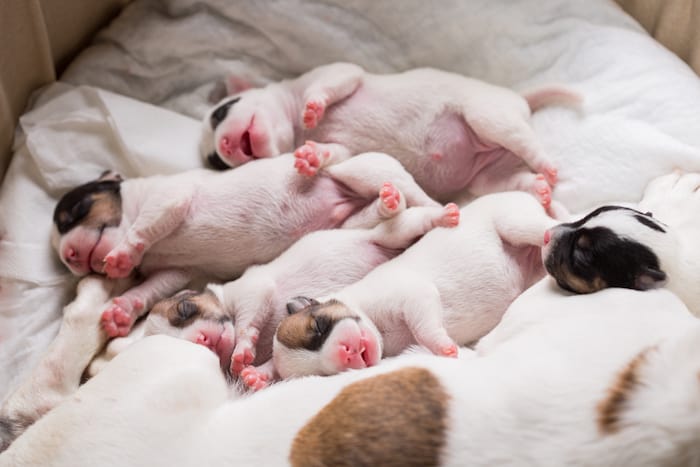
Which Dogs Are Most Susceptible to Parvo?
Some breeds suffer from more serious parvo infections than others do. Some of the breeds at the greatest risk of suffering serious symptoms include:
- Rottweiler
- Doberman pinscher
- American Staffordshire terrier
- English springer spaniel
- German shepherd
- Labrador retriever
Unfortunately, veterinarians don’t yet understand why some breeds are at higher risk of serious symptoms than others.
Given that some of these breeds (particularly Rottweilers and Dobermans) share ancestry, it is likely that they share a genetic predisposition that causes them to suffer from parvo more than other breeds.
How Do Dogs Get Parvo?
Parvo is a highly contagious disease that spreads easily from one dog to the next. It is transmitted via the fecal-oral route – infected dogs shed the virus in their feces, and other dogs can then contract the disease when they inadvertently ingest feces-contaminated material.
Part of the reason it is so contagious is that the virus is remarkably hardy.
It is resistant to temperature and humidity extremes, so it tends to linger in the environment for long periods of time. It can also contaminate just about anything a dog comes into contact with, including leashes, food bowls, kennels, and bedding materials. It can even cling to shed hairs, cleaning tools, human hands, clothing, and shoes!
The parvovirus can remain viable in your home for at least one month, and it can remain viable outdoors for up to 1 year in some cases.
How Long Are Sick Dogs and Puppies Contagious?
Dogs will begin shedding the virus in their feces within 4 to 6 days of exposure. Unfortunately, this means that some dogs begin shedding the virus before they develop any symptoms (which usually occurs about 5 to 10 days following exposure). This further complicates efforts to squelch outbreaks quickly.
Infected animals will continue to shed the virus for the duration of their illness, and they’ll keep doing so for up to 10 days after full recovery.
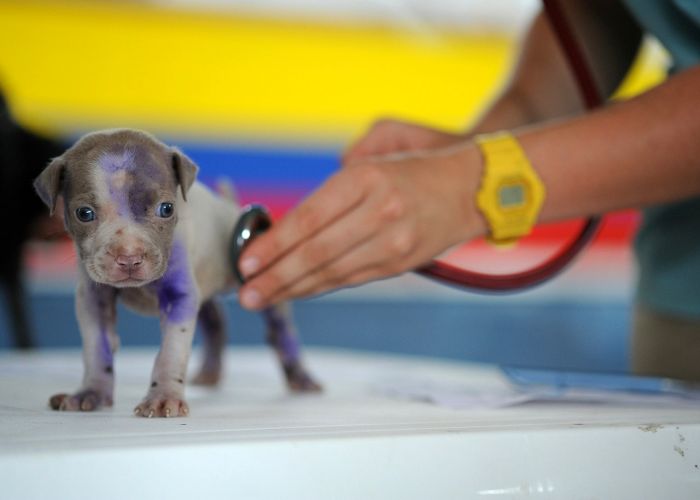
Dog Parvo Treatment: How to Treat Parvo Infections
There is no specific treatment for parvo in dogs, aside from supportive care, which can improve the odds that the sick canine will recover.
Dogs who manage to recover from the disease only do so once their body begins producing enough antibodies to fight off the infection.
Accordingly, the veterinary treatment for parvo primarily involves administering antibiotics, IV fluids, and antacids; feeding the dog through a nasogastric tube; and potentially washing out the dog’s stomach (a technique called a gastric lavage) while waiting for the immune systems to prevail against the virus.
Sick puppies and dogs will usually need to stay at the vet’s office for at least one to two weeks while receiving this care and (hopefully) recovering.
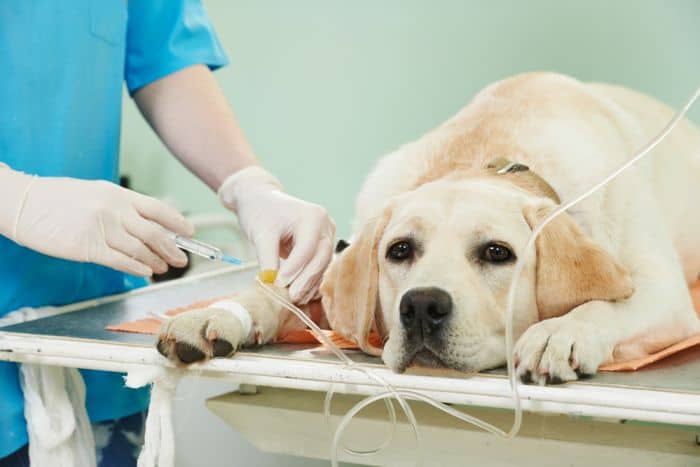
They may also require nutritional supplements, and many vets will also prescribe medications to reduce any fever present and to prevent vomiting.
Your vet will also watch your dog closely for signs of bacterial infections and prescribe canine antibiotics to help eliminate any that develop.
Recovering from Parvo: What Can You Expect?
A parvo diagnosis is certainly not what you’d call good news, but with high-quality veterinary care, your puppy has a 64% chance of recovering (statistically speaking). That said, the road to parvo recovery can be quite bumpy.
Most puppies begin showing signs of parvo about 5 to 10 days after they’re first exposed to the virus. The following 2 to 4 days are the most critical time period, as this is generally when puppies succumb to the virus. Those who make it past this initial period of illness often survive.
It’ll still take most surviving puppies about one to two weeks to be discharged and three to four additional weeks to return to good health (but remember, dogs continue to shed parvo in their feces for several more weeks, so use proper hygiene measures and continue to keep your puppy separated from unvaccinated pets).
At this point, your vet may allow your puppy to return home. Just be sure to follow any care instructions and administer any antibiotics or other medications your vet has prescribed.
It is also important to prevent your puppy from stuffing himself with food during this time. He’ll likely be ravenous following a battle with the virus, but his digestive tract will be in a relatively fragile state. So, provide smaller, more frequent meals, rather than heaping bowls of food.
Your pup will likely experience loose stools or diarrhea for several days following his return home. But they should firm up as his digestive system recovers.
With luck, your pup will begin feeling like his old self soon. Just do your best to provide him with the best care possible and try to keep his stress level low, so his immune system can operate at peak efficiency.
The Long-Term Ramification of Parvo
Unfortunately, researchers have recently discovered that parvo may cause long-term health problems for some dogs.
In 2018, scientists with Germany’s Centre for Clinical Veterinary Medicine and Texas A&M University published a study which found that dogs who survived parvo infections were at increased risk of developing long-term gastroenteritis (inflammation of the gastrointestinal tract).
In fact, 42% of the parvo-survivors surveyed appeared to have developed digestive problems, while only about 12% of those in the control group suffered similar problems.
How to Prevent Parvo: Protecting Your Pup from the Virus
Because parvo is such a serious disease and there is no specific treatment for it, prevention is critical.
Some of the best steps you can take to prevent your dog from catching the virus include:
- Be sure that your puppy is vaccinated against the virus. Because the antibodies provided by a puppy’s mother can complicate the vaccination process, most vets will recommend that your puppy receive at least three rounds of vaccinations before their first birthday.
- Make sure to have your adult dog vaccinated against parvo if your vet recommends it.
- Do not allow puppies to visit dog parks, pet stores, or other areas in which dogs congregate until your vet gives you the green light to do so.
- Do not board your puppy until he’s been completely vaccinated.
- Maintain good hygiene – especially if you have more than one dog in the home. Be sure to pick up poop in the backyard and clean up any indoor accidents promptly.
- Wash your hands after touching any dog with an unknown vaccination history. It may even be advisable to change your clothes and remove your shoes before entering your home, as parvo is frequently spread in this manner.
- Always isolate sick animals (particularly from those who’ve yet to be vaccinated) immediately.
- Keep the stress level of pets low, as this will help ensure their immune system operates at peak efficiency.
- Be sure to do everything possible to keep your puppy in good health, as illness will reduce immune function, leaving puppies more vulnerable to the virus.
Vaccinating Your Dog Against Parvo
The best way to protect your dog from parvo is to have your puppy properly vaccinated against the disease. Vaccines work by “introducing” your dog’s body to a virus, which “teaches” the immune system how to fight off the infection.
Vaccines can accomplish this in several ways.
For example, older parvovirus vaccines contained killed samples of the parvovirus. When injected into your dog, the immune system would learn to recognize the invaders and start producing antibodies to fight them off.
This way, if your dog were exposed to the virus in the future, your dog’s body would be able to defeat the virus before it can make him sick.
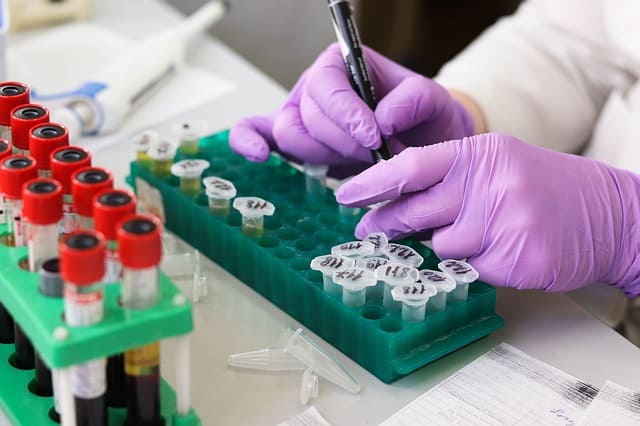
However, over time, vets began to discover that these vaccines weren’t as effective as they’d hoped. So, the parvo vaccine was changed to incorporate a “modified live virus,” instead. A modified live virus is a functional virus, which has been modified to make it less virulent, or capable of causing infection.
These newer modified live virus vaccines have proven to be much more effective, and they are now considered the standard for parvo prevention. There is a very small risk of dogs suffering mild parvo-like symptoms after being vaccinated with a modified live virus vaccine, but such occurrences are very rare.
Contrary to oft-repeated myths, there is no evidence that modified live virus vaccines impair immune function in dogs who receive the vaccine.
However, you can’t just give your new puppy a single vaccine against parvo and expect him to be adequately protected. Protecting your dog from this deadly disease generally requires at least three rounds of the parvo vaccine to provide the level of protection desired.
Part of the reason that multiple rounds of vaccination are necessary is that young puppies receive antibodies against parvo (as well as many other common canine diseases) from their mothers. These antibodies won’t last for long, but they help to protect newborn puppies, who’d otherwise be highly susceptible to the disease. This is also part of the reason that puppies rarely contract parvo before 6 weeks of age.
But these antibodies can also reduce the efficacy of the parvo vaccine. Accordingly, most veterinarians recommend vaccinating puppies against parvo at 6, 9, and 12 weeks of age.
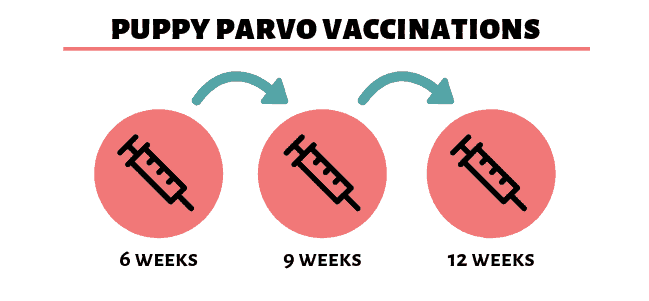
There are a few different versions of the parvo vaccine. Many vets administer a combination vaccine that not only includes a parvo vaccine, but vaccines against distemper, canine adenovirus, and parainfluenza viruses too.
The Importance of Hygiene When Battling Parvo
If your dog contracts parvo, you’ll need to employ very strict hygiene measures to help ensure it is not spread to other dogs in your home.
This can be challenging, as parvovirus is a very resilient pathogen that is difficult to kill.
Start by cleaning the entire area in which your dog is housed with soap and water. This is an important first step, as you must first remove the majority of the organic matter present before moving on to disinfection – bleach isn’t very effective when organic debris is present.
Once the area is clean and dry, you’ll need to go back and use a bleach-based solution to disinfect the area. The ASPCA recommends a solution of 1 part bleach to 32 parts water. Apply the solution liberally, and then let it stand for 10 minutes before rinsing the area and allowing it to air dry.
You can also use disinfectants containing potassium peroxymonosulfate (like this one) to eliminate parvovirus. Be sure to check out the ASPCA’s parvo prevention page to learn some more tips for cleaning and disinfecting your home when dealing with a parvo-infected pup.

Parvovirus in Humans
As mentioned earlier, parvo isn’t only a disease that affects dogs (even if that’s what most people mean when they reference the disease). Dozens of different animals can get parvo – including humans.
Human parvo is primarily a childhood disease, although adults can get it too. It is typically called erythema infectiosum or fifth disease. The latter term refers to the fact that it is one of the five common childhood illnesses that causes a rash (along with measles, rubella, chicken pox, and roseola).
Symptoms of Parvovirus in Humans
Fifth disease (aka human parvo) is usually a mild illness in humans. Some of the most common symptoms it causes include:
- Headache
- Runny nose
- Fever
- Joint pain
- Rash
The rash is the most obvious symptom of the illness, especially when it occurs in children. The rash usually causes the cheeks to become bright red, which gives the illness yet another common name – slapped cheek disease. Some people get a secondary rash on their chest, back, or feet a few days later, and in some cases, the rash can be very itchy.
Most of these symptoms will occur between 4 and 14 days of infection.
Treatment of Parvo in Humans
Humans who contract parvovirus B19 rarely need medical treatment – most people recover on their own within 1 to 3 weeks. There is no specific treatment for the virus anyway, so all your doctor can do for you is to make sure you are properly hydrated and treat your symptoms by prescribing pain medication, antihistamines, or fever-reducing medications.
Immunocompromised people and those who are suffering from other illnesses may experience more severe symptoms than most, and pregnant women should also seek medical care if they become sick with the disease.
After recovering from fifth disease, most people enjoy lifelong immunity to the disease.
Fifth disease is spread via nasal secretions released when people cough or sneeze. The virus can likely survive on inanimate objects in the environment for some time. Most people cease to be contagious once the rash develops.
There is no vaccine available to guard you against fifth disease, so the best way to protect yourself is by employing good hygiene, washing your hands regularly, and avoiding contact with people who are sick.
Can Humans Catch Parvo from Dogs (and Vice Versa)?
Most parvoviruses only affect one type of animal, or, in rare cases, a group of closely related animals (for example, the parvovirus that infects mink can also infect ferrets, skunks, and raccoons). So while dogs are susceptible to CPV-1 and CPV-2, humans are only susceptible to a species known as Parvovirus B19.
So, don’t worry – you can’t catch parvo directly from your dog, and your dog can’t catch parvo directly from you.
As a tiny caveat, we will mention that if either you or your dog happened to become contaminated with the strain the other is susceptible to, transmission could theoretically occur.
For example, if someone with Parvovirus B19 sneezes on your dog, and then you give your dog a big smooch, you could get sick. Or, if you touch a dog with parvo and then pet your pup, he may get sick.
Parvovirus in Cats
Cats are also susceptible to a parvovirus, although the disease caused by the virus is often called feline distemper, feline infectious enteritis, or feline panleukopenia.
The virus is ubiquitous in the environment, so most cats are eventually exposed to it. Fortunately, there is a vaccine available that should help prevent most cats from catching the disease.
Feline parvovirus is spread via the fecal-oral route, just like canine parvovirus is, but it can also be transmitted via saliva, urine, and blood. Pregnant females who contract the illness can transmit it to their babies.

Symptoms of Feline Parvovirus
Feline parvovirus or feline panleukopenia causes a variety of different symptoms in cats. Some of the most common include:
- Fever
- Low white blood cell count
- Diarrhea
- Poor coat health
- Anorexia
- Weight loss
- Withdrawal or hiding behaviors
- Neurological problems
- Anemia
- Vomiting
Feline parvovirus is a very serious illness for kittens between 3 and 5 months of age, but it is typically somewhat mild (and often completely asymptomatic) in adult cats. Cats who do become seriously ill often succumb to the disease, as the mortality rate is nearly 90%.
Treating Feline Parvovirus
Like the parvo in dogs and fifth disease in humans, feline parvovirus is not treatable with any specific medication. This is part of the reason that it is so important to have cats vaccinated.
Most cats who become seriously ill will need to be hospitalized, where they’ll receive potentially life-saving supportive care. Your vet will likely administer IV fluids and electrolytes to combat the dehydration, and he or she may also prescribe medications to relieve any pain or fever present, as well as antiemetic and antidiarrheal medications.
Feline parvovirus can cause illness that lasts for a significant length of time. Many cats will require 6 weeks or more to fully recover, even with the best possible veterinary care.
Can Cats Get Parvo From Dogs (and Vice Versa)?
Canine parvovirus only affects canines, and feline parvovirus only affects cats (including wild and domestic varieties).
So, no, dogs can’t spread parvo to cats. Sick cats won’t infect dogs, nor will sick dogs infect cats.
Similarly, you can’t catch parvo from your cat, nor can your cat catch it from you (although as with dogs, your hands can transmit feline parvovirus from one cat to another).
It is interesting to point out that while canine and feline parvoviruses are very species-specific, they are closely related to each other. In fact, canine parvovirus is thought to be a direct descendant of feline parvovirus.
Scientists suspect that the virus mutated multiple times (likely in the 1970s), which allowed it to “jump species” and begin infecting dogs.

Parvo FAQs
We’ve listed some of the most common questions about parvo below. Some of these questions and answers have already been answered previously, but we just wanted to make it easy for readers to find the information they want quickly.
What is the canine parvovirus survival rate?
The canine parvovirus survival rate is low. Up to 89% of unvaccinated puppies who contract the virus will die without treatment.
With prompt veterinary attention, most will survive, although some research suggests that up to 36% of unvaccinated puppies will die even with treatment.
How long does the canine parvo incubation period last?
Typically, the incubation period (the time between exposure and the onset of symptoms, when the virus is rapidly multiplying) for parvo is about 3 to 10 days. Most commonly it lasts about one week.
What are the symptoms of parvo in dogs?
Diarrhea is the most common symptom, but lethargy, vomiting, and weight loss are also seen in many cases. Dogs can also suffer heart problems after contracting the disease.
How is parvo treated in dogs?
There is no specific treatment for parvo in dogs. Your vet will simply need to provide supportive care while your pet’s immune system tries to fight off the infection. This is part of the reason that vaccination is so important.
How long does parvo last in a puppy?
Parvo typically resolves (in those dogs fortunate enough to survive the infection) about three to four weeks after the first appearance of symptoms. However, dogs will require even longer to recover and remain contagious during this time.
How can you protect your dog from parvo?
The best thing to do to protect your dog from parvo is to have him vaccinated. Several rounds of vaccination are usually required – just heed your vet’s advice.
You’ll also want to avoid taking your puppy to parks or other locations that are frequently visited by other dogs until he’s received the complete regimen of vaccines.
Can you cure parvo without a vet?
There is no way to “cure” parvo at all – it is simply a disease your dog’s body will have to fight off. This is part of the reason it is such a serious health problem, as well as part of the reason it is so critical to have your dog vaccinated.
For that matter, there’s not much your vet can do to treat an active parvo infection either – vets typically provide supportive care to parvo-stricken dogs, and treat some of the associated problems, such as dehydration, pain, and nausea.
Nevertheless, your dog will undoubtedly have a better chance of recovering if he stays at the vet while trying to fight off a parvo infection.
Do adult dogs need parvo vaccinations?
Most vets will recommend that adult dogs receive the parvo vaccine every 1 to 3 years to ensure they remain protected against the disease.
It is possible, though rare, for vaccinated dogs to contract the disease. Nevertheless, it still makes good sense to have all puppies and dogs vaccinated in accordance with your vet’s recommendation.
What is parvovirus B19?
Parvovirus B19 is the specific type of parvovirus that affects humans.
How serious is parvovirus in humans?
Parvo (called fifth disease when it affects humans) is generally mild and rarely requires medical attention. However, people in high-risk categories, like pregnant women, should seek medical attention.
How long does parvovirus last in humans?
Most people get over parvovirus in a week or two.
Can you give parvo to your dog?
Not directly, as humans and dogs are susceptible to different viral species. However, you can transfer canine parvovirus on your hands or clothing, so it’s always important to wash your hands thoroughly after coming into contact with a dog who may be suffering from parvo.
Can your dog give parvo to you?
Direct transmission is not possible, as humans and dogs are susceptible to different parvovirus species. Theoretically, if someone with fifth disease contaminates your dog, you could then catch the disease, but this is unlikely.
How is parvo diagnosed in dogs?
Your vet will diagnose a parvo infection by first collecting a sample by performing a rectal swab. From there, the sample is soaked in a special solution, which is then deposited on a testing strip. If the test is negative, one line will show up; if the test is positive, two lines show up (it’s something like a pregnancy test).
As you can see, parvo is a very serious disease, so you’ll want to make sure you do everything in your power to help protect your pup. Just be sure to follow your vet’s advice regarding vaccines and avoid taking your puppy to areas dogs frequent until your vet tells you it is safe to do so.
Have you ever had a puppy contract parvo? Tell us about the experience in the comments below.
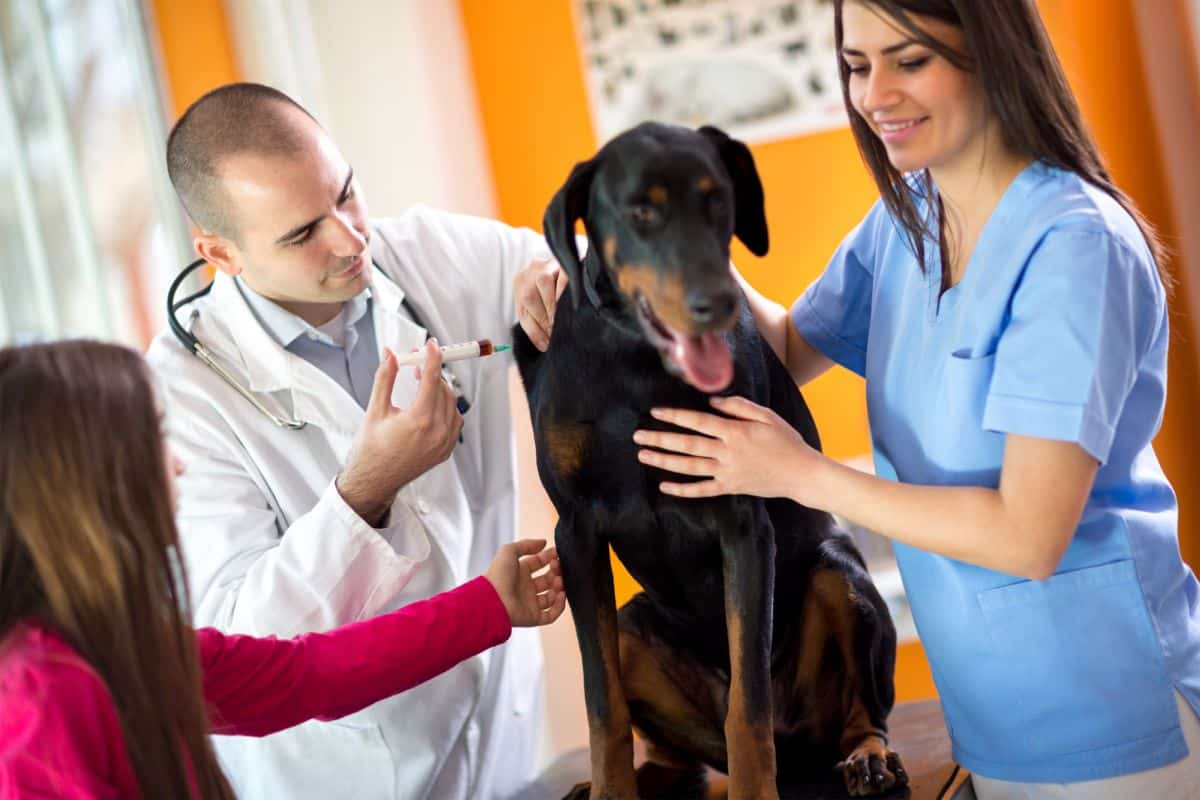




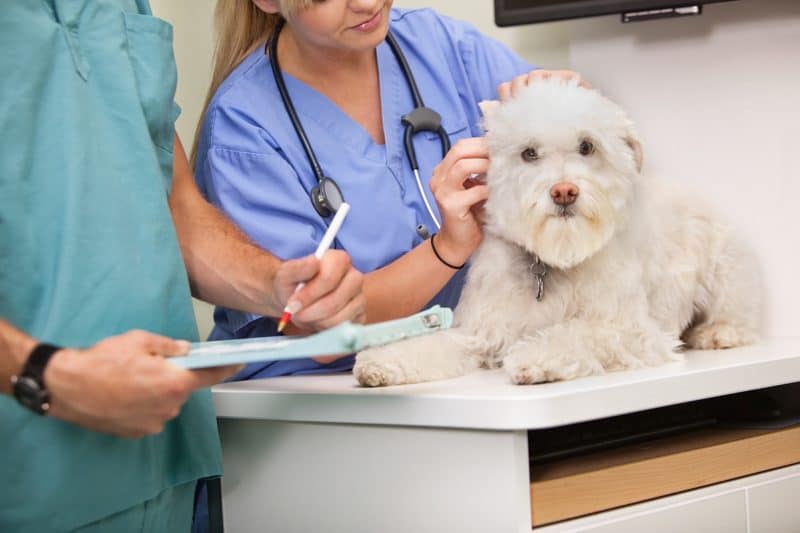
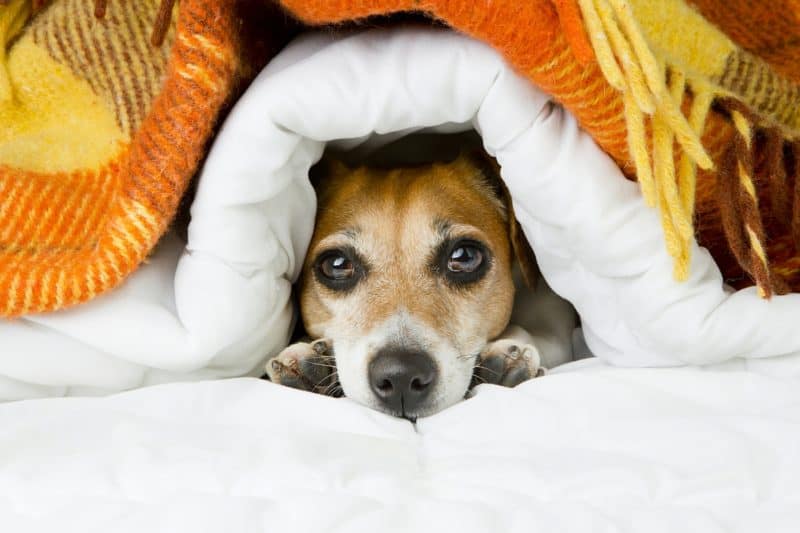
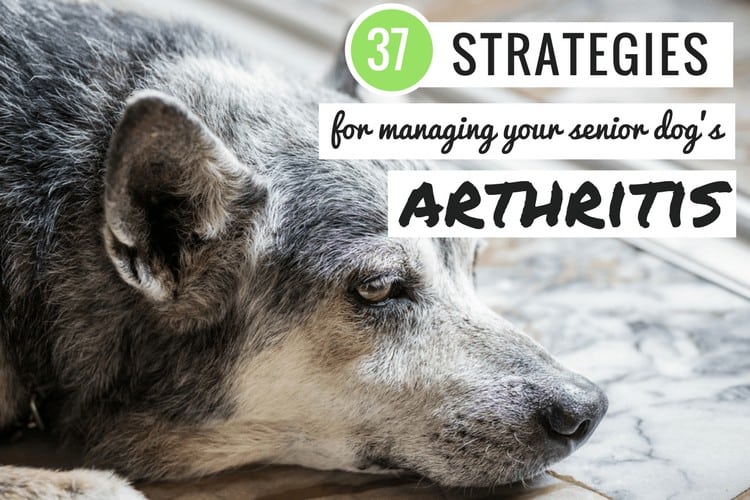

Leave a Comment